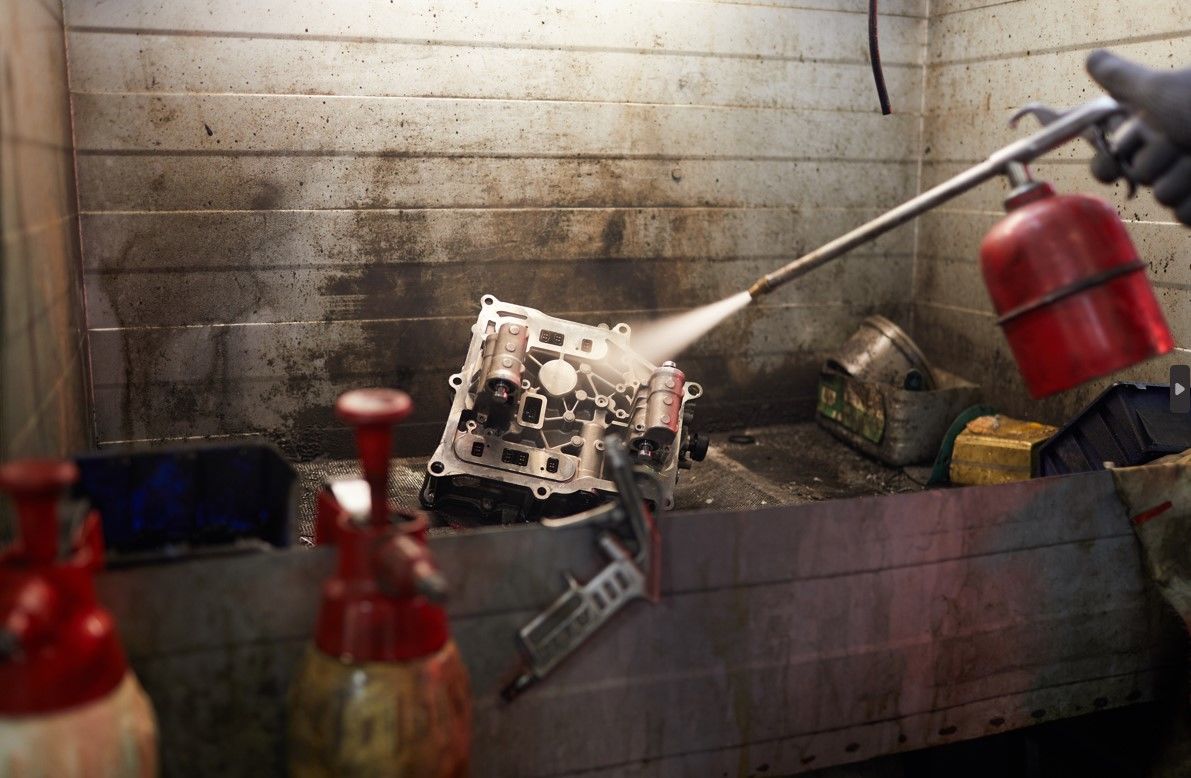While posted to an apparently quite windy and sandy and probably rather desolate location in the American desert, Brigadier General Benjamin Chew Tilghman noticed one day in about 1865 that something was not right with the windowpanes.
Based on everything that happened next, we can guess that the panes were cloudy and pitted. Hard to see out of a window like that. At some subsequent point, Brig. Gen. Tilghman had the "Aha!" moment - and invented sandblasting.
The History of Sandblasting - From Then to Now
The General might not recognise the blasting equipment we use at Revolution Paint & Panel - the process has come a long way. We specialise in commercial trucks and heavy equipment. We are set up to provide sandblasting service and manage surface restoration and refinishing for very large vehicles. Call us on 07 3266 1387 or email enq@revolutionpaintpanel.com.au to find out all that Revolution Paint & Panel can do for your business and your fleet.
The Early Days
Sandblasting has the benefit of being obvious - when it works, and it always does, it is very clear to all observers that it did. Corrosion and old paint vanish, clean metal appears, and the world is a better place. While we know little of Gen. Tilghman's activities and the history of sandblasting right after the part where he is inspecting the windows, we do know that he received a patent for the first sandblast machine in 1870.
No doubt there had been many trials and demonstrations of the new device beforehand, and many people standing around smacking their heads and saying why didn't I think of that. Plenty of time to tinker out there in the desert, and plenty of sand. The military picked up on it pretty quickly, especially the US Navy, which had plenty of rust.
Immediate Success
By 1871, Gen. Tilghman was already being awarded medals by prestigious technical institutions for the advancement of industry by his ingenious device. So it doesn't look like he had any lean years. In any case, the good General did not rest on his laurels - he put his shoulder to the wheel and came up with many improvements and extensions to the original patent, presumably while also absolutely raking it in. He went on to found Wheelabrator Tilghman - still in business, and a global leader in surface cleaning and preparation.
The Navy and Rust = The Big Time
It appears that the first truly large-scale use of sandblasting was by the US Navy in the 1930s. Sandblasting was being steadily improved through the early 1900s and was ready for application with industrial scope. While the Navy was well aware of sandblasting from early on, it became their standard for restoration and surface preparation worldwide - so sandblasting was thereby introduced, basically free of charge, to a very large audience of eager new buyers. The history of sandblasting is an uplifting one of substantial profit by fixing and restoring damaged and broken stuff that maybe even looks like it could never be good again.
Blasting Today
The term "sandblasting" is still very much in use. Sand, however, is not. It is actually unlawful in most locations to use more than 1 percent common silica sand in sandblasting. This is because the silica content if inhaled can cause silicosis of the lungs, which we do not want. Many different types of safe blasting media have been developed, from glass beads to soda to crushed walnut shells, each of them suited for different types of blasting work on different surfaces. The proper and correct term for sandblasting today is "abrasive blasting". But everybody still says sandblasting.
Exotic Blasting
Abrasive blasting has also branched out to include shotblasting and shot peening, wherein tiny metal spheres are blasted onto metal to literally micro-hammer it, compressing its structure and thereby substantially improving durability and crack resistance. The process is highly controllable and highly developed - in use especially in aerospace, and for performance and heavy-duty work on engines and drivelines. The history of sandblasting never stops.
Sandblasting and You and Revolution Paint & Panel
It remains the go-to process for full cleaning and restoration of metal and even some plastic surfaces. Revolution Paint & Panel has years of experience, the special equipment, and the trained technicians who can blast away corrosion and damaged paint from even very large vehicles, preparing the surface for new coatings and paint that will make your fleet look new.
Call us on 07 3266 1387 or email enq@revolutionpaintpanel.com.au to find out about our abrasive blasting service, and all that Revolution Paint & Panel can do for your business and your fleet - on time and on budget.

